Artist's conception of an impending collision between a coronal mass ejection and the Earth's magnetosphere.
Click on image for full size
NASA
Spiral Path of Material
For a planet to be affected by a blob of material being ejected by the sun, the planet must be in the path of the blob, as shown in this picture. The Earth and its magnetosphere are shown in the bottom right.
Disturbances in the solar wind arrive at the Earth within hours to days after a violent event on the Sun.
If the Earth were on the other side of the Sun (the top left of the picture), then the blob would miss the Earth, and there would be no geomagnetic storm or powerful aurora.
You might also be interested in:
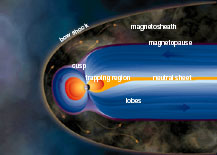
The Earth has a magnetic field with north and south poles. The Earth's magnetic field reaches 36,000 miles into space. The magnetic field of the Earth is surrounded in a region called the magnetosphere.
...more
The solar wind is formed as the Sun's top layer blows off into space, carrying magnetic fields still attached to the Sun. Gusts form in the solar wind associated with violent events on the Sun. Particles
...more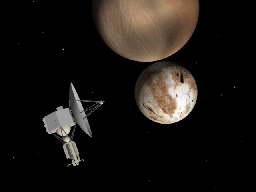
AU stands for Astronomical Units. It is a useful way to measure the distances in interplanetary space. It is the distance between the Earth and the Sun, which is about 93 million miles. For reference,
...more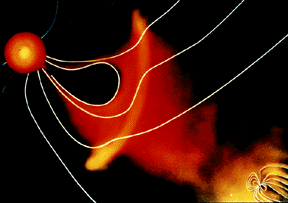
For a planet to be affected by a blob of material being ejected by the sun, the planet must be in the path of the blob, as shown in this picture. The Earth and its magnetosphere are shown in the bottom
...more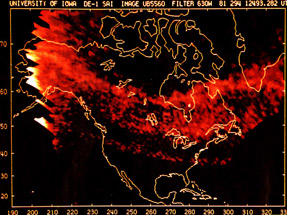
The aurora we are most familiar with is the polar aurora. This is what people are talking about when they say the northern or southern lights. But there are other less-known aurora, such as SAR arcs.
...more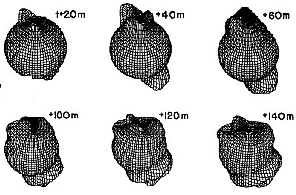
This figure shows the effect of the aurora on the atmosphere. When FAC's enter the atmosphere and create the aurora, they heat the atmosphere suddenly and abruptly. This creates an impulse which travels
...more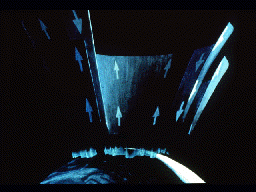
This picture shows the flowing of particles into and out of the auroral zone, as Field-Aligned currents (FAC's) take at short-cut through the atmosphere. Some of the particles entering the auroral zone
...more














